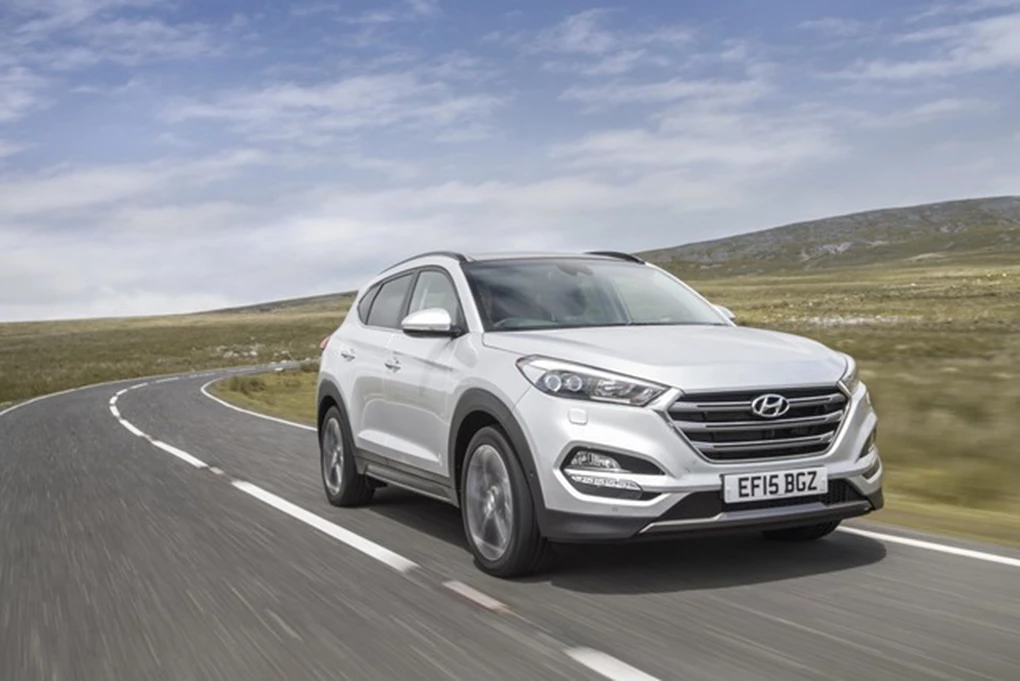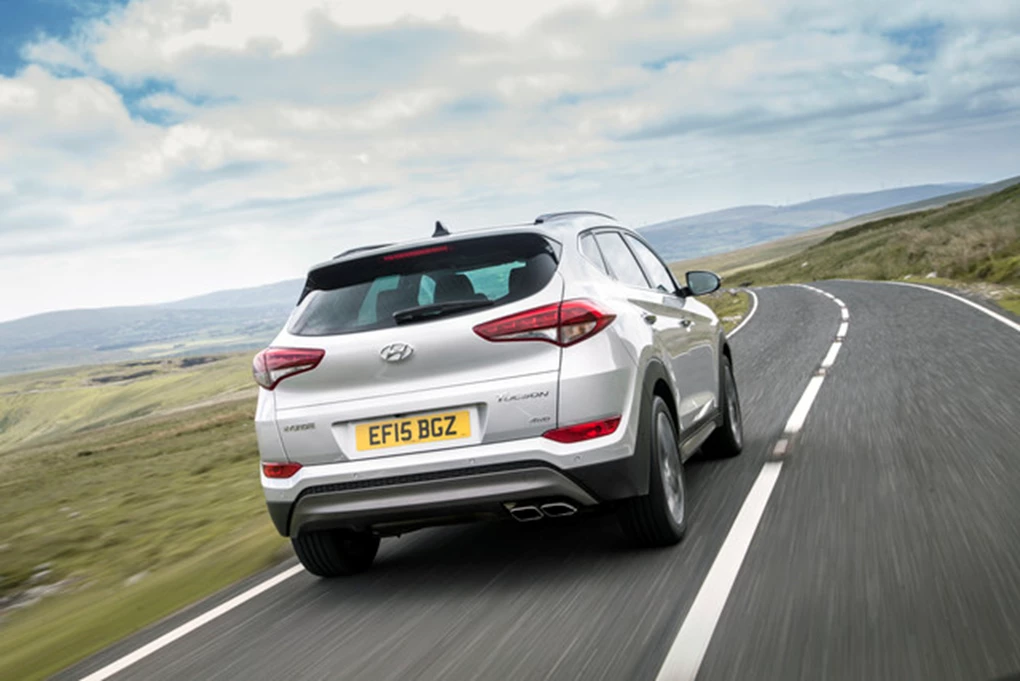The Tucson has already taken a stab at tackling the SUV market in the UK, although the first generation ended up replaced by the ix35 in 2009. But now the Tucson name is back.
Confused? Well, the ix35 ultimately acted as an experimental intermediate for Hyundai, allowing the brand to try out some new ideas and perfect its value for money offering. As this is the case, the Tucson can essentially be considered as a more evolved version of the ix35. Consequently, the main competition includes the popular Nissan Qashqai.
As it joins a recently-facelifted range, the Tucson gets the Hyundai brand’s new identity, with a much sportier front-end that looks longer and more pronounced than that of the outgoing ix35. The Tucson is also larger all-round, although slightly lower.
The ix35 was renowned for its practicality and affordability, but was lacking in the fun-factor department. Does the Tucson retain the former and improve on the latter?

Performance
There’s loads to choose from on the engine front, with three diesels and two petrols. As you can imagine, diesels are expected to rake in the most sales, with a 114bhp 1.7-litre unit expected to be the bestseller. There is also the choice of a 2.0-litre diesel with either 134bhp or 183bhp.
Power from the 1.7-litre turbodiesel is more than enough for the average commuter, delivering plenty of low-down pull that will allow you to easily overtake. We found that the higher-powered 2.0-litre units only delivered a marginal amount of extra oomph – certainly not enough to warrant a higher price tag and higher running costs. So, we suggest sticking with the sales predictions and going for the 1.7-litre.
Petrol power comes from a 130bhp 1.6-litre unit, however, there is a turbocharged version of this offering 175bhp and this sprints from zero to 62mph in 9.1 seconds, providing you go for the auto ‘box. Speaking of gearboxes, there is a choice of either a six-speed manual or seven-speed dual-clutch automatic, both of which offer smooth changes up and down the gears. The manual does have a rather long throw which can take some getting used to, but it is slick nonetheless.

Ride and Handling
We think the Tucson is on par if not better than the crossover top-dog, the Nissan Qashqai, for fun-factor.
This is where the Tucson has improved most on the model it replaces. The steering is the first thing you notice, as the Tucson offers good levels of feedback and weighting at the wheel, engaging you more with the driving experience. We think the Tucson is on par if not better than the crossover top-dog, the Nissan Qashqai, for fun-factor. With a 48 per cent increase in torsional rigidity, the Tucson is now more composed and planted in the corners as well, meaning it rolls far less than the ix35. Although it is less ruffled when thrown into a bend, thankfully comfort hasn’t suffered, with a suspension setup that nicely toes the line between firm and spongey. It is unlikely that potential Tucson customers will want to traverse cliff faces, but if you plan on tackling a muddy field or gravel track, then the 4x4 models will serve you well.
Interior and Equipment
The launch of the new Tucson follows Hyundai’s success in the European SUV market, as it has tallied 1.2 million sales.
Offering a slightly smarter feel than that of the outgoing ix35. The Tucson’s cabin is well laid-out and thanks to its numerous storage compartments and supportive seats, it is up there with the likes of the Mazda CX-5 and Nissan Qashqai when it comes to comfort and convenience. Equipment levels is where it really excels and there are five to choose from: S, SE, SE Nav, Premium and Premium SE. Even basic models get the likes of air-con, DAB digital radio, USB connectivity, Bluetooth and 16-inch alloys. SE adds some slightly more luxurious features like heated seats, rear parking sensors and dual zone climate control. SE Nav models are expected to be best-selling, adding an eight-inch touchscreen sat-nav and a reversing camera. Those after even more luxury can go for the Premium trim – which adds leather upholstery, heated rear seats and front parking sensors – or the Premium SE – heated steering wheel, panoramic sunroof and electric tailgate. Thanks to slightly larger dimensions, the Tucson offers 513 litres of boot space, which is almost 50 litres bigger than the ix35 and over 80 litres more than the Qashqai. This can extend to 1,503 litres if you fold the back seats down. Rear practicality is also impressive, with enough leg and head room to keep passengers happy on long journeys.
Cost
Hyundai claims that the Tucson will carry the “best residuals in its class”, something worth considering when it comes to crunch time.
Coming in at just under £19,000, the Tucson is slightly more expensive than the Qashqai. But the difference is so small that it is not enough to sway your decision on price alone. The ace up the sleeve of the Qashqai however is its ultra-low emitting 1.5-litre diesel, boasting CO2 as low as 99g/km and a claimed average fuel economy of 74mpg. The Tucson is still impressive though, with the 1.7-litre diesel emitting 119g/km and claiming to return an average of around 60mpg. Hyundai claims that the Tucson will carry the “best residuals in its class”, something worth considering when it comes to crunch time. Hyundai also has its impressive five-year warranty to tempt you.
Our Verdict
The Tucson is certainly an example of a manufacturer getting a rejuvenation right. It had to be better than the ix35 and be able to tackle the Qashqai on all levels – and it definitely does that. Hyundai has managed to retain the practicality of the ix35 but shoehorn in some driving dynamics to boot, making it stand out, as opposed to it merely being another SUV on the forecourt. It isn’t quite at the same stage as the Mazda CX-5 for enjoyment levels, but it is a big step in the right direction.




